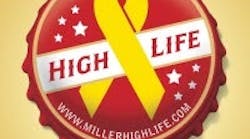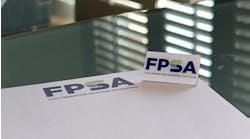At first glance, urban nutrition, disaster relief, veterans' support, school supplies and animal rescue don't seem to have a lot in common. They do, though: Each is the focus of a cause-marketing program created by a food or beverage processor to serve the greater good.
Cause marketing continues to play a strong role in food and beverage companies' business strategies, with packaging providing an essential communications vehicle for many of the initiatives.
Results of a cause-marketing study by Cone LLC (www.coneinc.com), a Boston-based strategy and communications agency, indicate that altruism is not the sole driver: Cause-marketing programs are effective in building both brand image and sales.
According to the 2010 Cone Cause Evolution Study report, "85 percent of consumers have a more positive image of a product or company when it supports a cause they care about." The report also says 80 percent of Americans "are likely to switch brands, about equal in price and quality, to one that supports a cause."
But getting the word out about cause-marketing programs is key. The study found that "90 percent of consumers want companies to tell them the ways they are supporting causes."
Kraft's Triscuit adopted the home farming/urban farming movement by putting a packet of herb seeds on packages.
And that's where packaging comes in — as a point-of-purchase component in the media mix, supporting the campaign's social media, broadcast and print communications.
Triscuit plants urban farms
For Triscuit, a brand of Kraft Foods Inc. (www.kraftfoodscompany.com), Northfield, Ill., packaging expresses the brand's commitment to "Home Farming" with an on-pack gift of seeds. Triscuit launched the Home Farming movement last year in partnership with Urban Farming, a nonprofit organization.
The idea behind the movement is that everybody can grow herbs and vegetables, even if they live in a city. In 2010, Triscuit and Urban Farming planted 50 community-based home farms; this year, they will replant those and add 15 new ones. The farms are in 20 cities, and the food grown goes to the farms' volunteers and local food banks.
Five of the new farms will be planted in low-income housing facilities to address the paucity of healthy food for sale in those communities. These five farms will be in Chicago and Los Angeles; Triscuit and Urban Farming are working with the cities' housing authorities to develop the farms.
The Triscuit carton plays a motivational role in the campaign. "We wanted to make sure the Triscuit packaging reflected our commitment to making it easy for everyone, everywhere to grow their own fresh vegetables and herbs. On eight million packages of Original and Reduced Fat Triscuit, we attached plantable basil and dill herb seed cards so people can immediately begin planting," says Leslie Waller, Triscuit brand manager.
She adds, "We doubled this allotment from the four million seed cards that were provided last year so that we can help even more people across the country begin planting and enjoying fresh culinary herbs."
It makes sense, from a business and charitable standpoint, to put language on packaging to explain how the brand is helping its cause of choice. But how much do you need to say?
Before crafting the pledge language for its hot-sauce labels, Ladybird and Friends LLC (www.ladybirdandfriends.com), a start-up based in Gulf Breeze, Fla., consulted its chosen nonprofit, the ASPCA, as well as the Better Business Bureau (BBB). Ladybird wanted to donate a percentage of its overall profits to the animal-rescue organization and also make a $1 per bottle donation for its summer-seasonal Lola Hot Pink Grapefruit sauce.
Stephana Gaudin, president of Ladybird and Friends, learned that the ASPCA's registered trademark symbol needed to appear in the pledge language and that labels should include limitations such as time limit or maximum donation.
Gaudin says the BBB also asks marketers to be specific about percentages. "For example, we do 5 percent of all profits for all of our normal sauces. But for the Lola only, we do $1 [per bottle], up to $10,000, so we must put that on the label." For all Ladybird sauces, the relevant pledge language appears on the back of the bottle.
Text and graphics on the Triscuit cartons include the message "Plant a Seed/Grow a Movement," the Home Farming logo, information about Triscuit's partnership with Urban Farming and directions for planting the seeds. The carton also directs consumers to Triscuit's Facebook page to learn more.
ConAgra targets child hunger
Also in its second year is Child Hunger Ends Here, a program of ConAgra Foods Inc. (www.conagrafoods.com), Omaha, Neb., and the nonprofit organization Feeding America. The program's goal for 2011 is to donate 2.5 million meals to Americans in need, as it did in 2010.
The campaign includes various ways for consumers to contribute, including shopping for ConAgra brands such as Banquet, Chef Boyardee, Marie Callender's, Healthy Choice, Peter Pan, Fresh Mixers and Kid Cuisine. Packaging for these brands displays the Child Hunger Ends Here logo on the package's front panel or label plus a purchase code on the back. At the program's website (www.childhungerendshere.com), the consumer enters the eight-digit purchase code to trigger ConAgra's financial donation to pay for one meal. Feeding America works with local food banks to provide the meals.
"We think packaging's very important, because it's a tangible item that consumers take home from the store with them. If it sits on their shelves or in their freezers or in their refrigerators, it's a constant reminder to participate in this campaign," says Dan Skinner, public relations and social media manager with ConAgra Foods. "It's more than a one-moment thing. It continues to impact the consumers" and also drives them to the website to enter the code.
ConAgra's specially marked packages were available from March through May of this year, but consumers can continue to redeem the codes through August.
Mango Tango builds hope
Hunger and nutrition are not the only causes that processors champion. Last year, following the massive earthquake in Haiti, Coca-Cola Co. launched the Haiti Hope Project. Through this program, sales of the company's Odwalla juices and smoothies contribute to Haiti's reconstruction.
Last year, 100 percent of the profits from Odwalla Mango Lime-Aid, a limited-time flavor, went to the project to help 25,000 local mango farmers develop what Coca-Cola characterizes as a sustainable mango industry. The front label of Mango Lime-Aid prominently displayed the Haiti Hope Project logo and called out the 100 percent contribution.
This year, Odwalla Inc. (www.odwalla.com), Half Moon Bay, Calif., announced that its popular Mango Tango fruit smoothie would be the product tie-in for the Haiti program.
For each bottle of Mango Tango sold, the company has pledged to donate 10 cents to the project, with a cap of $500,000 per year through 2015 (when the project concludes). Once again, the Haiti Hope Project logo and pledge are incorporated into the package graphics.
Miller High Life beer wants to give veterans a "High Life" experience by sending them to a baseball game or concert.
"With profits from each Odwalla Mango Tango bottle purchased going toward the Haiti Hope Project, packaging is a key point-of-sale communications tool," says Irma Shrivastava, vice president of marketing for Odwalla. "Consumers generally review the packaging before deciding to buy it, so it's important for us to use the packaging to inform them of the project's mission."
Consumers get a taste of the 'high life'
Packaging also plays a special part in the "Give a Veteran a Piece of the High Life" initiative from MillerCoors LLC (www.millercoors.com), Chicago. Miller High Life regular and Light cans, multipack carriers and bottle tops all sport a yellow-ribbon graphic to flag the products as part of the campaign.
Through the program, MillerCoors donates money to Iraq and Afghanistan Veterans of America (IAVA), giving 10 cents for each bottle cap and can tab returned by consumers. IAVA, in turn, provides veterans with experiences like NASCAR races, concerts, baseball and football games and even a fishing trip to Alaska.
Consumers can return the caps and tabs by mail or at participating stores, restaurants and bars through Sept. 30. Miller High Life plans to contribute up to $1 million in cash and experiences via the campaign this year.
"We wanted to give veterans a positive, memorable experience and raise awareness of the unique issues facing those who have served," says Miller High Life brand manager Brendan Noonan, noting that the campaign is in its second year. "Through this program, veterans will get a 'piece of the High Life' and create a network of peers and ongoing support through IAVA."
He adds, "Writing a check is great, but we wanted to really give vets a piece of the 'High Life,' something that civilians often take for granted — a simple show of gratitude like a baseball game or a chance to go to a concert."


